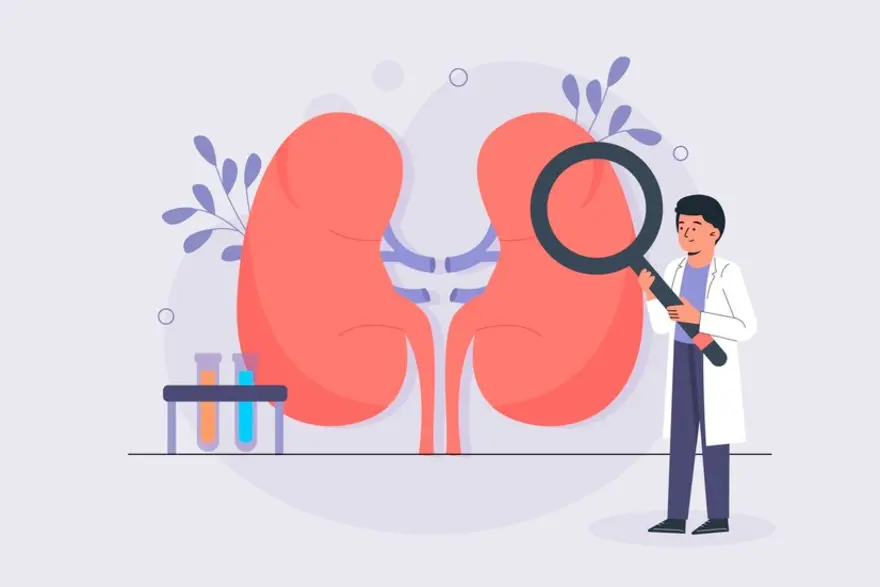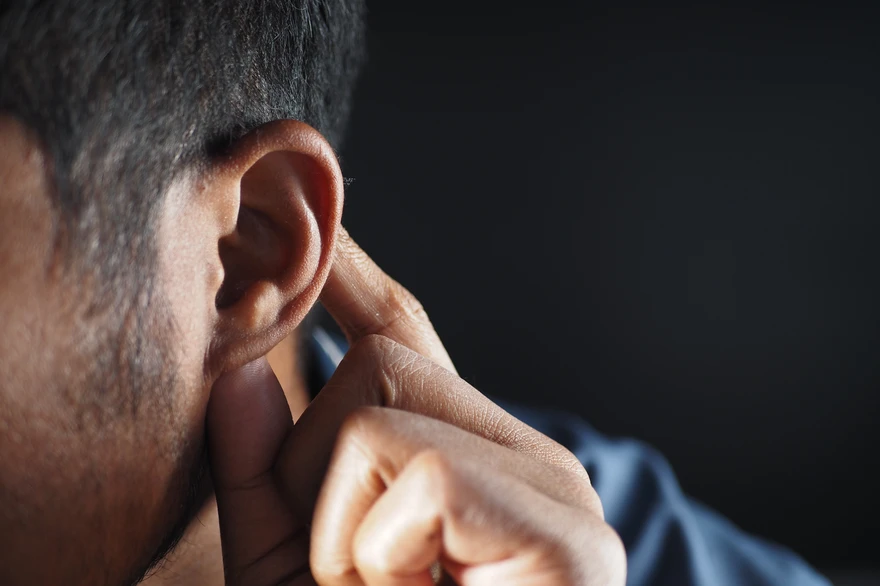Preventive Healthcare
Osteomalacia: Symptoms, Causes, and Treatment Options
84 Views
0

What is Osteomalacia?
Osteomalacia, commonly referred as soft bones, is a medical condition characterised by the softening of bones. This often arises from a problem that causes vitamin D deficiency. Vitamin D plays a significant role in absorption of calcium, an essential mineral necessary for maintaining the strength and hardness of bones. In children, this condition is referred to as rickets.
What are the Symptoms of Osteomalacia?
Osteomalacia symptoms might not be noticeable initially, as they tend to emerge gradually. However, as the condition advances, individuals may begin to experience:
- Widespread bone pain, especially in the hips
- Muscle weakness that can interfere with daily activities
- Bone fractures that happen without major injury
Additionally, individuals may also feel numbness around the mouth or tingling sensations in their arms and legs due to low calcium levels in the blood. Cramps or spasms occurring in the hands and feet may also be linked to this condition.
What are the Causes of Osteomalacia?
Osteomalacia is a condition characterised by the softening of bones due to inadequate mineralisation, primarily caused by deficiencies in essential nutrients.
- A primary osteomalacia causes is insufficient vitamin D, which is crucial for calcium absorption in the intestines. Without sufficient vitamin D, bones cannot mineralise properly, resulting in weakness, pain, and a higher risk of fractures.
- Alongside vitamin D deficiency, inadequate dietary intake of calcium and phosphate can significantly contribute to osteomalacia. These minerals are vital for preserving bone density and strength.
- Conditions impairing the nutrient absorption, such as celiac disease, inflammatory bowel disease, or those resulting from a gastric bypass surgery, can also lead to osteomalacia.
- Certain medications can worsen the problem; for an instance, some anticonvulsants can interfere with vitamin D metabolism, increasing the risk of osteomalacia.
- Additionally, genetic factors can play a role; rare inherited disorders may affect how the body processes vitamin D and essential minerals necessary for bone health.
- Chronic conditions like chronic kidney disease or liver disease can affect the balance of minerals in the body, contributing to the development of osteomalacia.
Grasping the different osteomalacia causes is crucial for developing effective prevention and treatment strategies. This includes dietary changes, supplementation, and addressing underlying health conditions to restore bone health and avoid complications.
What are the Treatments for Osteomalacia?
Osteomalacia treatment primarily focuses on addressing the underlying causes of osteomalacia.
- Supplements of vitamin D, calcium, and phosphorus may be recommended for individuals who have difficulty absorbing nutrients through their intestines.
- People with certain conditions may require regular blood tests to monitor their phosphorus and calcium levels.
- Getting adequate exposure to sunlight could also help improve vitamin D levels naturally.
With appropriate treatment, many individuals with vitamin D deficiency disorders might notice improvements within weeks. Generally, full recovery typically occurs within six months.
What are the Potential Complications of Osteomalacia?
If left untreated, osteomalacia can lead to serious complications that can greatly affect a person's quality of life.
- One of the most concerning complications is the heightened risk of bone fractures, especially in the ribs, spine, and legs. Weakened bones become more susceptible to breaking, even from slight injuries or falls.
- Another potential complication is the development of pseudofractures, also known as Looser's zones. These are partial cracks in the bones that can be very painful and make walking difficult. In severe cases, these cracks can progress to fractures.
- Muscle weakness and pain are typical symptoms of osteomalacia, which can result in difficulties with walking and a waddling gait. This can have a substantial effect on a person's mobility and independence.
In some rare cases, untreated osteomalacia can result in bone deformities, especially in children whose bones are still developing. Without timely intervention, the symptoms of osteomalacia may worsen over time, increasing the risk of complications and adversely affecting quality of life.
How is Osteomalacia Diagnosed?
Diagnosing osteomalacia involves a comprehensive approach combining medical history, physical examination, and various diagnostic tests.
- Initially, a healthcare provider will gather information about the patient's symptoms, which might include bone pain, muscle weakness, and difficulty walking. Since these symptoms can be unclear and progress slowly, it may take years for a diagnosis.
- Blood tests play a crucial role in the diagnostic process, usually assessing levels of calcium, phosphate, and vitamin D. An elevated level of alkaline phosphatase (ALP) and parathyroid hormone (PTH) can also indicate the presence of osteomalacia.
- A 24-hour urine test can also be performed to assess the excretion of calcium and phosphate.
- Imaging studies, such as X-rays, can highlight distinctive signs of osteomalacia, including pseudofractures referred to as Looser's zones.
- In some cases, a bone biopsy may be conducted to examine the mineralisation of bone tissue directly.
Overall, an accurate diagnosis often requires a combination of these methods to confirm osteomalacia and rule out other conditions affecting bone health. An early diagnosis is essential for effective treatment and recovery.
What Should I Eat if I have Osteomalacia?
Diet is crucial in managing osteomalacia. It’s essential to prioritise a nutrient-rich diet that support bone health, particularly emphasising calcium, vitamin D, and phosphate.
These include:
- Milk and Yogurt: These are excellent sources of calcium and vitamin D. Opt for fortified varieties if available.
- Paneer (Cottage Cheese): A good source of calcium and protein
- Spinach, Broccoli, and Mustard Greens: These vegetables provide calcium and other essential vitamins. However, be cautious with spinach as it contains oxalates that can inhibit calcium absorption.
- Fatty Fish: Include options like sardines or mackerel, which are rich in vitamin D.
- Almonds and Walnuts: These provide both calcium and healthy fats.
- Rajma (Kidney Beans) and Chole (Chickpeas): High in protein and can help meet dietary needs
- Fortified Cereals: Choose cereals fortified with vitamin D and calcium.
- Oranges and Kiwi: These fruits can provide vitamin C, which is beneficial for bone health.
Including these nutrient-rich foods in your diet can significantly improve bone health and help in managing osteomalacia. Prioritising calcium, vitamin D, and phosphate, along with medical advice, is crucial for overall well-being.
FAQs
Is Osteomalacia the same as Osteoporosis?
Although both conditions involve weakened bones, they are not the same. Osteoporosis affects already formed, living bone, whereas osteomalacia impacts the hardening process of new bone formation.
Are there different types of Osteomalacia?
Yes, osteomalacia can differ depending on the specific nutritional deficiency that leads to it, such as a lack of vitamin D or phosphate.
Is Osteomalacia the same as Rickets?
Though both conditions result in weak and soft bones due to nutrient deficiencies, rickets specifically affects new bone growth in children. On the other hand, osteomalacia can develop in adults and children.
Conclusion
Understanding osteomalacia, its potential causes, identifying its symptoms, and knowing your treatment options are all crucial steps towards safeguarding your bone health. If you suspect you may have this condition, it's important to consult a healthcare professional.
At Metropolis Healthcare, we offer advanced diagnostic services to facilitate the early detection of various health issues. Our skilled technicians offer at-home blood sample collection for your convenience.
You can access your reports quickly online through email or the convenient Metropolis TruHealth app. Prioritize your well-being with reliable results and customized care from Metropolis Healthcare.
 Home Visit
Home Visit Upload
Upload













1701259759.webp)









 WhatsApp
WhatsApp